Subaru Outback Vs Chevrolet Blazer Comparison
The Chevrolet Blazer and Subaru’s Outback might not seem like they belong together in the market, but that’s probably because you remember the Outback as the small station wagon it used to be.
Look at the spec sheet and the two are shockingly close together. But one of the two is outdoorsy and rugged, and the other puts style at the front of the spec sheet. Does it trade its utility for sporty looks, and which one does better at what the class should do best: hauling people and stuff comfortably?
Get a Quote on a New Subaru Outback or Chevrolet BlazerYou might be questioning just how close they really are. Well how about 0.1 inches? That’s the difference in length, with the 191.4-inch long Blazer the longer by just a hair. It’s not much of a difference in height either, with the Blazer just under half an inch taller at 67.0 inches. There’s a bit more of a difference in width with the Outback: 3.7 inches narrower at 73 flat, but you get the idea. The biggest gap between the two is at the scales, where the Blazer tips them 360 lbs heavier, at least in the top trim of each. That’s a big difference, one that you’ll notice every time you drive, stop, or fill the tank.
Interior Space
While the dimensions on the outside are almost the same, things feel a whole lot different on the inside. The Outback feels absolutely cavernous in both the front and rear seats compared with the Blazer. That’s more headroom, more elbow room, and for back seat passengers, it’s the difference between fitting a tall person and a short one in that row. While the interior measurements aren’t that far off on paper, climb in and there is a wide gulf between them that means larger drivers and passengers will both be finding more room in the Outback than in the Blazer.
Cargo Space
Does that mean that Chevrolet has traded passenger space for cargo? Not at all. In fact, the Outback eclipses it when it comes to fitting stuff in the hatch. With 75.7 cubic feet versus 64.2 all-in, the difference is huge. That’s with the back seats folded, of course, but with them in place the Outback takes a slightly smaller win at 32.5 to 30.5 cubic feet. It’s decidedly still a win, though the Blazer’s cargo management system, with rails and dividers that slide to optimize utility, can help make it easier to make the most of the space.
Driving Experience
On the road, it’s still clear where each one of these is aiming. The Outback drives like every other recent Subaru, which means it’s soft and compliant over bumps but remarkably well damped. There’s plenty of suspension travel for the lunar landscape that is modern pavement, but once it rolls a bit it suddenly takes a plant in corners and handles very well for this segment. This is definitely the plusher of the two, and it’s the one you’ll feel happier in if you’re headed off the pavement at any point.
If you want to know how the Blazer’s suspension is tuned, look no further than the low-profile tires on the 19-inch wheels. They look stiff, and it is stiff. It’s a sharper ride with less body roll than the Outback, though the Outback offers better steering feel. If your local roads are smooth pavement, you might prefer the Blazer’s more performance-oriented ride, though this is still far from a performance crossover. If the roads aren’t perfect, the kids might not appreciate that jarring ride from the rear seat, especially on heavily patched pavement.
Technology
Subaru offers Outback buyers an 11.6-inch infotainment screen that is as massive as it sounds, set in portrait orientation so it doesn’t span the entire dash. Everything’s controlled through the screen, and it operates very quickly and smoothly. It also comes with Apple CarPlay and Android Auto, but while the massive screen is nice to use, the large text and low-resolution graphics look slightly dated in this new-for-2020 vehicle. The lowest trim model gets a pair of 7.0-inch screens instead, stacked one atop the other, with the top one handling audio/phone functions and the bottom handling vehicle and climate controls.
Chevrolet’s Blazer comes with lane change and blind-spot alerts, plus adaptive cruise and emergency braking as part of a comprehensive active safety suite, but most are only offered on RS and Premier, with the first two optional on some other trims. However GM’s excellent current infotainment system on an 8.0-inch screen is standard across the board. With Apple CarPlay and Android Auto both included, this one’s easy to use, quick to respond, and it looks upscale because it has to: GM uses this system on everything from the basest Bow Ties to the top-spec Caddies. However, in the Blazer it’s angled strangely downward, so looking at it can be like trying to use your laptop when you’ve not opened the screen far enough. It’s probably mounted like that to reduce glare, or some similar issue, and not simply because the one in the Camaro is positioned the same way, but it’s less than ideal unless you’re a shorter driver who sits with the seat all the way down.
Interior
We bring all that up because the interior of the Blazer is largely and clearly inspired by that of the Camaro. Even more similar than the touchscreen are the massive round vents. The center vents twist to control the air temperature as well as the HVAC fan speed, just like they do in the Camaro where it’s more of a necessity due to the small interior space than a styling exercise like it is in the Blazer. Still, it’s fun to look at and use, though it certainly feels more low-budget than the Subaru’s controls.
Where the Blazer uses hard plastic, the Outback uses loads of soft leather, even on the dash and door panels in higher trims. It makes for a warm and inviting place to be, helped by seats that we found to be some of the most comfortable anywhere. Rear seat passengers in the Outback are similarly treated to head and legroom that should be sufficient for even passengers well over six-feet tall. The Blazer’s panoramic roof, on the other hand, puts a bulge in the headliner right where tall passengers would like to put their noggin. Combine the cramped space with a rear seat that seems to have a bar protruding from the cushion edge, and don’t expect adults to want to be back there for long.
Safety
The Subaru comes with loads of safety tech as standard. Its EyeSight system includes adaptive cruise with lane centering, plus automatic pre-collision braking and throttle management. For even more safety kit, blind spot monitoring with rear cross-traffic alerts are standard on most trims as is reverse automatic braking. Subaru’s DriverFocus Distraction Mitigation, which watches you to make sure you’re watching the road is optional on Limited, standard on Touring, Touring XT, and Limited XT.
Chevrolet offers lane change alert with blind spot warnings, rear cross-traffic, and rear park assist, but only standard on top RS and Premier trims. They’re optional on Blazer trim, which is, confusingly, the mid-trim, not the base one. Adaptive cruise, forward automatic braking and forward collision braking, as well as lane departure warning, are also available, but again only as an option on RS and Premier.
Powertrains
Both the Outback and Blazer offer a pair of big and little engines. Subaru has two boxer-fours, with the lesser one a 2.5-liter making 182 hp and 176 lb-ft of torque. The uplevel option is a 2.4-liter turbo making a much more respectable 260 hp and 277 lb-ft. Buyers will probably find the 2.5 a little underpowered, despite the best efforts of the CVT, but the same can be said of Chevy’s base engine. The 2.4T, on the other hand, delivers plenty of power with little of Subaru’s trademark boxer burble; much of the noise we heard was a slight whine from the CVT.
Chevrolet’s 2.5-liter four makes 193 hp and 188 lb-ft, but in the heavier Blazer don’t expect it to be any quicker than the lower-spec Subaru. It’s also front-drive only, an option that Subaru doesn’t have. The 3.6-liter V6, on the other hand, makes a much healthier 308 hp and 270 lb-ft, though it makes you run all the way to redline to see max power. It’s a strong-sounding engine that moves the Blazer more quickly than the turbo Outback, helped by the nine-speed automatic, a feature both Chevrolet engines have. The Blazer offers more absolute power, and most of the time a better gearbox, though the niner can get caught out at low speeds. That means the Blazer will win on the drag strip, but these two really are neck and neck when it comes to performance most of the time.
Fuel Economy
Blazer’s 2.5-liter front-drive only four-pot is rated for 22 mpg city, 27 highway to the AWD 3.6-liter’s 18/25. Subaru, on the other hand, rates the lighter Outback at 26/33 for the 2.5 and 23/30 for the 2.4T. The Subaru’s higher figures are ones that you will definitely notice at the pumps whenever you need to fill up, with the lower engine’s even more exceptional since it comes with all-wheel drive.
Style
When it comes to the sheet metal, these vehicles likely couldn’t be much further apart. Despite the Outback’s size, it’s decidedly a station wagon visually. It also wears plenty of rugged cladding that links it to the original and gives it a go-anywhere appearance that’s not shared by the Blazer. Instead, the Blazer clearly wants to be a Camaro for someone who needs real back seats. And some actual cargo storage space. From the upright, angular nose to the kick-up of the D-pillar at the rear, this one is at home in the city, not the country.
Pricing
The Outback starts from $26,645, and then moves up to Premium, Limited, and Touring trims, with the turbo offered on Limited and Touring capping out at $39,695. It’s a wide range of choices, and it’s nice that you can get the smaller engine on the top trim, or get the turbo on a mid-range model if you want the power but not all the luxury bits.
Chevrolet starts the Blazer from $28,800 if you want front-drive, but if you want all-wheel drive you also need the V6 and that means the price shoots up to $36,000. Top-spec Premier comes in at $45,600, but all the active safety bits add $2,165, and the sunroof is extra again, making this one much more expensive than the Subaru, especially for those who want all-wheel drive.
Conclusion
So which one wins this comparison? While the Subaru takes the win in just about every category, if you’re looking at the Blazer that’s probably not going to matter. The unique style of the Blazer can’t be topped by Subaru if that’s what you want in your next vehicle, and that applies even more strongly to trims like this blacked-out RS. Buyers who spend more of their time out of town, though, or who are more concerned with performance, space, fuel economy, and the budget, will find the Outback the natural choice. As long as they don’t get too hung up on the wagon versus crossover debate, because this Subaru makes that distinction an even tougher one to sort out.
Evan moved from engineering to automotive journalism 10 years ago (it turns out cars are more interesting than fibreglass pipes), but has been following the auto industry for his entire life. Evan is an award-winning automotive writer and photographer and is the current President of the Automobile Journalists Association of Canada. You'll find him behind his keyboard, behind the wheel, or complaining that tiny sports cars are too small for his XXXL frame.
More by Evan Williams



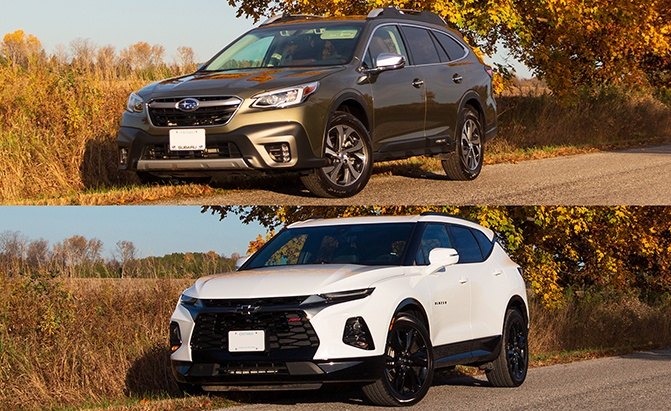
































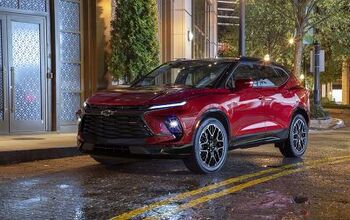



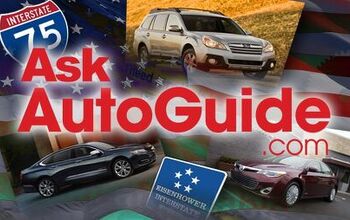


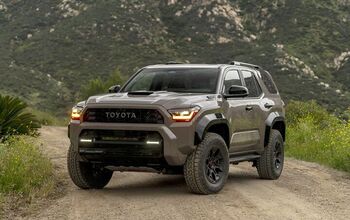

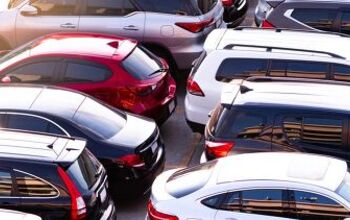


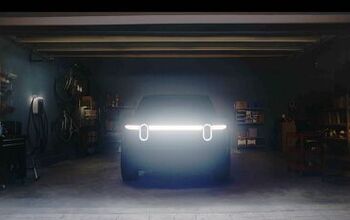


Comments
Join the conversation